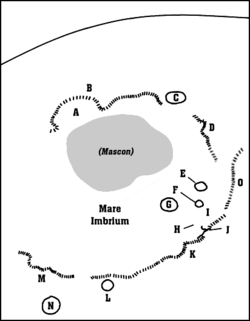 Lunar Orbiter 4 image | |
| Coordinates | 30°42′N1°30′E / 30.7°N 1.5°E |
|---|---|
| Diameter | 39 km |
| Depth | 3.4 km |
| Colongitude | 358° at sunrise |
| Eponym | Autolycus |



Autolycus is a lunar impact crater that is located in the southeast part of Mare Imbrium. The crater is named after the ancient Greek astronomer Autolycus of Pitane. [1] West of the formation is Archimedes, a formation more than double the size of Autolycus. Just to the north is Aristillus, and the outer ramparts of these two craters overlap in the intermediate stretch of the lunar mare.

